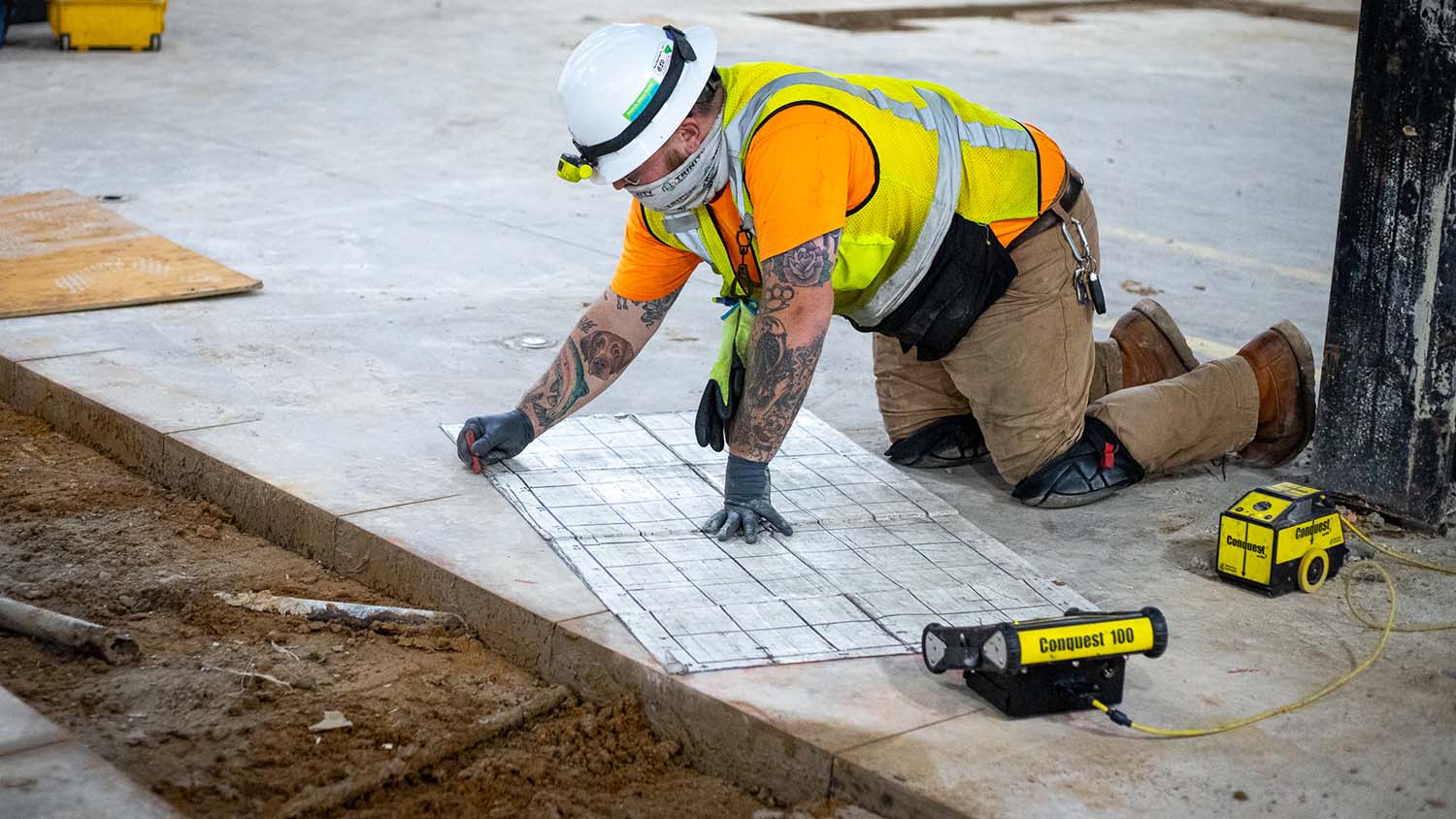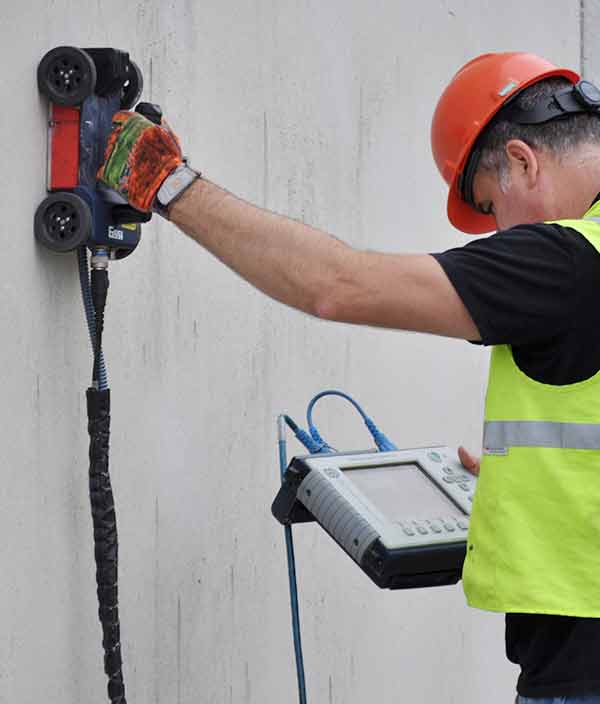Advanced Concrete Scanning Techniques: Ensuring Architectural Honesty
Advanced Concrete Scanning Techniques: Ensuring Architectural Honesty
Blog Article
Elevate Your Building And Construction Refine With the Strategic Insights of Concrete Scanning for Boosted Productivity
In the world of modern-day building practices, the quest for performance and precision is extremely important. Accepting innovative modern technologies has become a keystone for achieving these purposes. One such technology that has actually reinvented the construction market is concrete scanning. By using the tactical understandings provided by concrete scanning, building and construction experts can open a realm of improved productivity and streamlined procedures. The effects of incorporating concrete scanning go far past surface-level advantages, providing an extensive impact on project outcomes.

Advantages of Concrete Scanning
Enhancing job effectiveness and safety and security, concrete scanning offers a non-destructive method for finding surprise things within concrete structures. By using modern technologies such as ground-penetrating radar (GPR) and concrete x-ray imaging, building and construction teams can accurately situate rebar, post-tension cords, electrical channels, and various other obstructions before boring, cutting, or coring right into concrete.
The advantages of concrete scanning are countless. It decreases the threat of unintended damage to essential structural components, decreasing the likelihood of pricey repair work and project hold-ups. Second of all, it boosts worker security by giving real-time insights right into the place of surprise threats. Building and construction websites can be complicated environments, and understanding what lies below the surface area can avoid injuries and mishaps.
Furthermore, concrete scanning advertises total job performance by improving process and avoiding rework. By recognizing potential concerns at an early stage, groups can readjust their strategies proactively, conserving time and resources in the future. Basically, the adoption of concrete scanning modern technologies is a critical financial investment that pays dividends in terms of security, efficiency, and cost-effectiveness.
Technology Integration for Effectiveness
Concrete scanning's capability to streamline process and boost job performance can be additional maximized through calculated integration of sophisticated innovations. By including Structure Details Modeling (BIM) software application right into concrete scanning procedures, construction groups can accomplish a greater degree of precision and control. Furthermore, the combination of Increased Reality (AR) technology with concrete scanning can enhance on-site visualization, permitting task managers and workers to overlay digital details onto the physical environment in real time.
Preventing Expensive Errors
How can careful focus to detail during concrete scanning processes assist building and construction groups in avoiding expensive errors? Concrete scanning plays an important function in recognizing possible concerns prior to they intensify into costly errors. By using sophisticated scanning innovations such as Ground Penetrating Radar (GPR) and electromagnetic induction, building and construction groups can accurately discover rebar, utilities, spaces, and other obstructions within concrete structures. This degree of accuracy makes it possible for task supervisors to make enlightened choices relating to the layout and style of their building plans, minimizing the threat of unintended damages to essential framework throughout the structure process. Additionally, concrete additional resources scanning helps in making sure structural stability by recognizing weaknesses or problems in the concrete early, permitting prompt fixings and modifications. By proactively resolving these problems, building groups can avoid costly errors such as rework, hold-ups, or safety and security dangers that may emerge from overlooked disparities in the concrete framework. Eventually, investing in extensive concrete scanning procedures verifies to be a cost-effective approach over time, saving both time and sources while improving total job efficiency and quality.
Enhancing Job Monitoring
Meticulous attention to information throughout concrete scanning refines not only helps in preventing expensive errors however also lays a solid structure for effective job administration in building ventures. By integrating concrete scanning innovation into project monitoring techniques, building teams can enhance operations, boost communication, and make certain that tasks remain on track.
Concrete scanning offers valuable understandings into the structural honesty of existing aspects, allowing job supervisors to make enlightened decisions relating to design modifications or construction sequences. This proactive technique minimizes the risk of unanticipated delays or revamp, ultimately conserving time and sources. Additionally, the data acquired from concrete scanning can be incorporated right into Structure Info Modeling (BIM) systems, allowing real-time cooperation and control amongst various stakeholders.
Additionally, concrete scanning helps job managers determine possible threats or barriers before they rise right into bigger problems, advertising a much safer workplace for all entailed. With enhanced presence and precision provided by concrete scanning modern technology, project managers can effectively plan, monitor, and execute construction tasks with better performance and confidence.
Making The Most Of Efficiency
One key facet of making best imp source use of performance is with the fostering of concrete scanning technology. By using ground-penetrating radar (GPR) and various other scanning techniques, building groups can properly situate rebar, conduits, and other subsurface elements, reducing the danger of pricey errors and hold-ups throughout excavation and exploration.
Furthermore, embracing Building Information Modeling (BIM) software application can substantially boost performance by navigate to this website creating detailed 3D designs that boost job visualization and sychronisation among different trades. BIM enables better clash detection, making it possible for issues to be determined and resolved before building also begins, conserving time and resources over time.
Implementing a lean construction technique, which concentrates on eliminating waste and maximizing efficiency throughout all job phases, is an additional efficient strategy for making the most of productivity. By cultivating collaboration, communication, and continuous renovation, construction groups can function a lot more cohesively towards achieving project goals in a productive and structured manner.
Verdict
To conclude, the strategic execution of concrete scanning in the building and construction procedure offers numerous benefits, consisting of enhanced effectiveness, expense savings, boosted task monitoring, and improved productivity. By incorporating this technology, building and construction groups can stay clear of expensive mistakes, enhance their operations, and maximize their general task output. Concrete scanning is a useful tool that can raise the construction procedure and cause more lucrative and effective end results.

Report this page